Fruits and vegetables Publications

Reducing food loss and valorizing fruits and residues to boost pineapple industry sustainability and profitability
24/05/2024
Pineapples, like other tropical fruits, are susceptible to food loss and waste due to their high moisture content and perishable nature. Factors including climate change, inadequate infrastructure, and handling during harvesting, packaging and transportation increase the risk of food loss, impacting fruit supply and quality.

Reducing food loss and valorizing fruits and residues to boost avocado industry sustainability and profitability
20/05/2024
Avocados, like other tropical fruits, are susceptible to food loss and waste due to their high moisture content and perishable nature. Factors including climate change, inadequate infrastructure and handling during harvesting, packaging and transportation increase the risk of food loss, impacting fruit supply and quality.
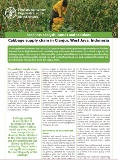
Food loss analysis causes and solutions: Cabbage supply chain in Cianjur, West Java, Indonesia. Fact Sheet
30/09/2023
Cabbage (Brassica oleracea var. capitata) is a popular vegetable to grow among Indonesian smallholder farmers due to high demand and relatively easy cultivation. Post-harvest is a critical stage in the cabbage supply chain because it determines the product saleability and price. However, poor handling practices and careless quality control can lead to significant food loss and consequently reduce the profit margins for all actors along the supply chain.
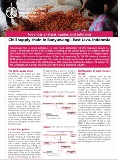
Food loss analysis causes and solutions: Chili supply chain in Banyuwangi, East Java, Indonesia. Fact Sheet.
30/09/2023
Indonesians have a strong preference for spicy food, particularly red chili (Capsicum annum L.), which is abundantly grown in the country. According to the Central Bureau of Statistics, national chili production in 2020 reached 2.77 million tonnes, with a consumption rate of 2.14 kg per capita. The largest chili producer is the province of East Java, accounting for 784 050 thousand tonnes or 28.28 percent of national production.

Food Loss in International Trade in the Asia-Pacific Region: Country Case Study on Bangladesh
08/05/2023
Bangladesh, a major producer of vegetables and fruits, faces constraints such as post-harvest management, inadequate transportation and storage facilities, limited access to quality seeds, and stringent quality standards imposed by importing countries. Good agricultural practices, post-harvest management practices, and value chain efficiencies are lacking, resulting in a significant amount of food loss.

Nutrition and the environment. Nurturing people, protecting the planet
26/04/2023
This discussion paper highlights the interlinkages between nutrition and the environment across various dimensions from policy to impact. It focuses on diets and food systems, which lie at the nutrition−environment nexus, including some aspects related to FLW.

Imperatives for Improvement of Food Safety in Fruit and Vegetable Value Chains in Viet Nam
28/02/2023
The publication draws on the results of safety tests, a stakeholder survey, and a literature review. It notes that building confidence in safe fruit and vegetables would encourage consumers to eat more of them, boosting people’s health and producers’ livelihoods. Its recommendations include expanding producers’ cooperatives and designated safe vegetable production areas, using incentives and controls to drive down chemical pesticide misuse, and publishing the results of regular testing.

Food Science and Technology Solutions to Improve Food and Nutrition Security: Reducing Food Loss & Valorizing Food Processing Side Streams
31/12/2022
In 2022, the Institute of Food Technology/Food and Nutrition Security Steering Committee hosted a virtual roundtable discussion on their first challenge, “Food Science & Technology Solutions for Reducing Food Waste and Valorizing Waste Streams” on November 1 – 2, 2022. The goal was to identify current and potential future solutions from food science and technology that can contribute to the reduction of food loss and valorization of food processing side streams.

Report of FEBA Annual Forum on Food Aid and Social Inclusion "Fruits and vegetables for human development: let’s take action!"
01/01/2022
On 14 December 2021, the European Food Banks Federation organised its Annual Forum on Food Aid and Social Inclusion with the title “Fruits and vegetables for human development: let’s take action!”. This conference is organised by FEBA together with Italmercati. On this ocassion, we bring together distinguished speakers addressing the...

Get Involved - International Day of Awareness of Food Loss and Waste
21/08/2021
The International Day of Awareness of Food Loss and Food Waste, observed for the second time on 29 September 2021, will make a clear call to action for both the public (national or local authorities) and the private (businesses) sectors, as well as individuals, to prioritize actions and move ahead with innovation to reduce food loss and waste towards restoring and building back better and resilient-ready, food systems.

Post-harvest management of papaya to ensure quality and safety
30/11/2020
Guidance for stakeholders in the horticultural supply chain. Good post-harvest handling is important in maintaining the quality and safety of papayas as they are transported from the farm to the market.

Post-harvest management of papaya to ensure quality and safety
29/11/2020
Guidance for stakeholders in the horticultural supply chain. Good post-harvest handling is important in maintaining the quality and safety of papayas as they are transported from the farm to the market.

Post-harvest management of lettuce to ensure quality and safety
30/04/2020
Guidance for stakeholders in the horticultural supply chain. Good post-harvest handling is important in maintaining the quality and safety of lettuce as they are transported from the farm to the market.

Preserve your own food | Promoting healthy eating through home food processing and preservation
28/02/2020
This booklet is a practical manual presenting the simple techniques used to preserve starchy staples, dark leafy green vegetables, fruits and vegetables in Fiji. The first half of the booklet provides a general introduction to the basic principles of food preservation and spoilage. Methods of preservation are then defined including solar drying technique for the processing of local starchy staples and dark green leafy vegetables into flour and leafy green powder.
-background-paper.tmb-th600x450.jpg?Culture=en&sfvrsn=6f2094b4_1)
The International Year of Fruits and Vegetables (IYFV-2021)|Background Paper
01/01/2020
This background paper outlines the benefits of fruit and vegetable consumption, but also examines the various aspects of the fruit and vegetable sector from a food systems approach: from sustainable production and trade to loss and waste management.
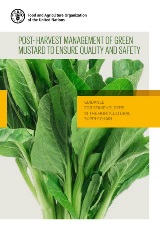
Post-harvest management of green mustard to ensure quality and safety
01/01/2020
This brochure was developed to display the results of the FAO Technical Cooperation Project: TCP/TIM/3310, Capacity-development to reduce post-harvest losses in horticultural chains in Greater Mekong Subregion (GMS) countries. Improvement in the implementation of good practice in post-harvest handling to assure safety were piloted. This brochure aims to provide information on...
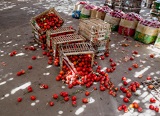
Smallholder Farmer Perceptions of Postharvest Loss and Its Determinants in Fijian Tomato Value Chains
01/11/2019
The Fiji Islands, like many small Pacific island nations, are thought to incur high rates of postharvest loss. Little work has been undertaken to quantify the amount of loss within Pacific horticultural value chains, or identify the key determinants. This study sought to quantify postharvest loss within Fijian smallholder tomatoes producers.
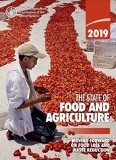
The State of Food and Agriculture 2019. Moving forward on food loss and waste reduction
14/10/2019
Reducing food loss and waste is widely seen as an important way to reduce production costs and increase the efficiency of the food system, improve food security and nutrition, and contribute towards environmental sustainability. Growing attention to food loss and waste is reflected in the Sustainable Development Goals (SDGs).

Food loss analysis: causes and solutions - Case study on the mango value chain in the Republic of India | Factsheet
01/09/2018
To improve global, regional and local knowledge about the underlying reasons for food loss, as well as to assess where critical loss points occur, FAO undertook a series of case studies involving numerous food supply chains in developing countries. Utilizing a defined food loss and waste analysis framework.

Food loss analysis: causes and solutions - Case study on the mango value chain in the Republic of India
01/09/2018
To improve global, regional and local knowledge about the underlying reasons for food loss, as well as to assess where critical loss points occur, FAO undertook a series of case studies involving numerous food supply chains in developing countries. Utilizing a defined food loss and waste analysis framework.
